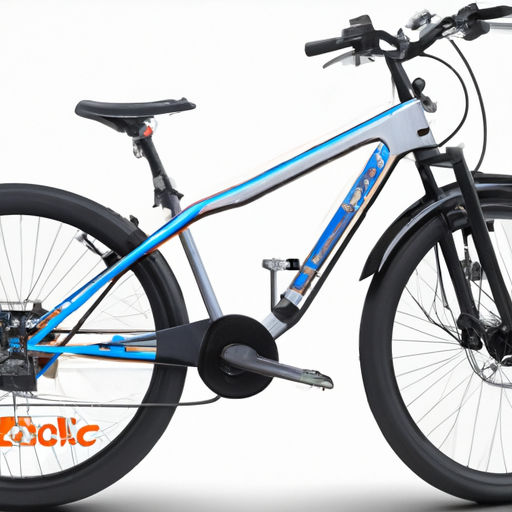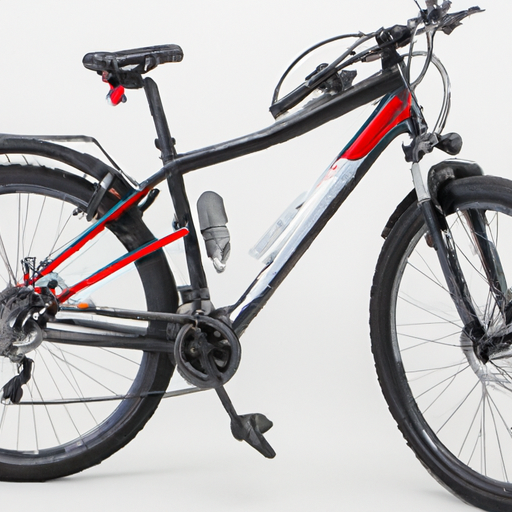Are you looking to embark on the exciting journey of owning your first electric bike? Look no further! In this informative article, we will guide you through the process of choosing the perfect electric bike that suits your needs. Whether you’re planning to ride in the bustling city streets or venture off the beaten path, this buyer’s guide will provide you with the essential tips and knowledge to make an informed decision. Get ready to transition smoothly into the thrilling world of e-biking with our comprehensive guide.

Step 1: Determine your riding style
Choosing the right electric bike starts with understanding your riding style and preferences. Here are three key factors to consider:
Consider your terrain
Think about the type of terrain you’ll be riding on most frequently. Are you primarily biking on paved roads, gravel paths, or off-road trails? Knowing your terrain will help determine the type of bike you need. For example, if you’ll be mostly riding on rugged trails, a mountain bike with sturdy tires and suspension would be a suitable choice. On the other hand, if you’ll be commuting in the city, a city/commuter bike with a more streamlined design would be more appropriate.
Consider your distance
How far do you plan on riding? If you intend to cover long distances, you’ll want to choose an electric bike with a larger battery capacity and a longer range. This will ensure that you don’t run out of battery power midway through your journey. On the other hand, if your rides will be shorter and more casual, a bike with a smaller battery capacity may suffice.
Consider your speed
Are you looking for a leisurely ride or are you aiming for faster speeds? Electric bikes have different maximum speed limits, so it’s important to choose one that aligns with your desired speed. Keep in mind that higher speeds may require a more robust motor and battery system.
Step 2: Set your budget
Setting a budget is an essential step in any purchasing decision. Electric bikes come in a wide range of prices, so it’s important to decide how much you’re willing to spend. Here are a few factors to consider when setting your budget:
Decide on a price range
Consider how much you’re comfortable spending on an electric bike. Prices can vary greatly depending on the brand, specifications, and features of the bike. It’s important to strike a balance between your budget and the quality of the bike you’re getting.
Consider long-term costs
Besides the initial purchase price, think about the long-term costs associated with owning an electric bike. This includes maintenance, repairs, and potential upgrades. Research the average costs of these expenses for the specific bike you’re considering.
Look for financing options
If your budget doesn’t allow for an outright purchase, look into financing options. Some retailers offer financing plans that allow you to spread out the cost of the bike over several months. This can make purchasing an electric bike more affordable and convenient.
Step 3: Choose the right frame style
The frame style of your electric bike affects its overall look, functionality, and comfort. Here are a few popular frame styles to consider:
City/commuter bikes
City/commuter bikes have a comfortable, upright riding position and are designed for commuting in urban areas. They often have fenders, racks, and lights integrated into their design, making them practical choices for daily commuting.
Mountain bikes
Mountain bikes are ideal for off-road adventures and rough terrains. They have wider tires, robust suspension systems, and durable frames to handle the challenges of trail riding.
Folding bikes
Folding bikes are compact and portable, making them perfect for commuters who need to take their bikes on public transportation or store them in compact spaces. They can be easily folded and carried, making them highly versatile.
Step-through bikes
Step-through bikes have a low-slung frame design that allows riders to easily mount and dismount the bike. This is particularly beneficial for riders who may have limited mobility or prefer not to swing their leg over a higher top tube.
Cargo bikes
Cargo bikes are designed to carry heavy loads and are useful for transporting groceries, children, or other cargo. They have a sturdy frame with extended rear racks or front cargo platforms for carrying items.
Step 4: Consider the motor type
The motor is the heart of an electric bike, providing power and assistance while you ride. There are two main types of motors to consider:
Hub motors
Hub motors are located in either the front or rear wheel hub and provide direct power to propel the bike forward. They are generally known for their simplicity, low maintenance, and affordability. However, they can make the bike feel less balanced due to the additional weight in the wheel.
Mid-drive motors
Mid-drive motors are located near the bike’s bottom bracket and work in conjunction with the bike’s gears. This type of motor provides a more natural riding experience as it utilizes the bike’s gears to optimize power delivery. Mid-drive motors are typically more efficient and offer better hill climbing capabilities.

Step 5: Evaluate battery capacity
The battery capacity of an electric bike determines how far you can ride and how long it takes to recharge. Consider the following factors when evaluating battery capacity:
Understand battery types
There are different types of batteries used in electric bikes, such as lithium-ion and lithium polymer. Lithium-ion batteries are the most common and offer a good balance of weight, capacity, and lifespan. Make sure to research the specific battery type used in the bike you’re considering.
Consider range and charging time
Range refers to the distance an electric bike can travel on a single battery charge. Evaluate the range of the bikes you’re considering to ensure they meet your distance requirements. Additionally, consider the charging time of the battery. Faster charging times can be more convenient if you need to recharge frequently.
Check battery warranty
Batteries are a significant investment, so it’s important to check the warranty offered by the manufacturer. A good warranty will provide peace of mind and protect you from defects or early battery failure.
Step 6: Examine the bike’s components
A well-built electric bike should have high-quality components that contribute to its overall performance and durability. Pay attention to the following components:
Brakes
Ensure that the electric bike you choose has reliable and responsive brakes. Disc brakes are commonly used in electric bikes for their superior stopping power and consistent performance, especially in wet conditions.
Gears and drivetrain
Consider the number of gears and the overall drivetrain system of the electric bike. More gears allow for a wider range of speeds and can be beneficial when climbing hills or riding at higher speeds.
Suspension
If you’ll be riding on rough terrain or off-road trails, consider an electric bike with suspension. Suspension helps absorb shock and improves comfort, especially when encountering bumps and uneven surfaces.
Tires
Choose tires that are appropriate for the type of riding you’ll be doing. Wider, knobby tires are suitable for off-road adventures, while narrower, smoother tires are better for paved roads and city commuting.
Lights and reflectors
Safety should always be a top priority, especially when riding at night or in low-light conditions. Look for electric bikes that come with built-in lights and reflectors to ensure visibility to other road users.
Accessories
Consider any additional accessories you may need or want for your electric bike. This could include a rear rack, fenders, a water bottle holder, or a phone mount. These extras can enhance your riding experience and functionality.

Step 7: Test ride multiple electric bikes
Before committing to a purchase, it’s important to test ride different electric bikes to find the one that suits you best. Here are a few options to consider for test rides:
Visit local bike shops
Local bike shops often have a range of electric bike models available for test rides. Take advantage of their expertise and guidance as you try out different bikes to determine which one feels the most comfortable and suits your riding style.
Ask for demo opportunities
Some electric bike manufacturers or retailers offer demo opportunities where you can try out their bikes in real-world conditions. These events allow you to experience the bike’s performance and get a feel for how it handles different terrains.
Consider rental options
If you’re unable to find a test ride opportunity, consider renting an electric bike for a day or weekend. This will give you a chance to ride the bike on your own terms and evaluate its performance in the specific conditions you’ll be riding in.
Step 8: Research the brand and read reviews
Investing in an electric bike is a significant decision, so it’s important to research the brand and read reviews before making a purchase. Here’s what to consider:
Learn about reputable brands
Research established electric bike brands known for their quality, reliability, and customer satisfaction. Look for brands with a track record of producing durable and well-designed bikes.
Read customer reviews
Customer reviews can provide valuable insights into the pros and cons of a particular electric bike model. Pay attention to reviews from riders who have similar preferences and requirements as you.
Consider warranty and customer support
Check the warranty provided by the manufacturer and consider the level of customer support offered. A good warranty and responsive customer support can give you peace of mind knowing that your investment is protected and you’ll receive assistance if any issues arise.

Step 9: Check legal requirements and regulations
Electric bikes have specific legal requirements and regulations that vary by location. Here are a few considerations:
Know the electric bike classifications
Electric bikes are categorized into different classes based on their maximum speed and power output. Familiarize yourself with the classifications in your area to ensure you choose a bike that complies with local regulations.
Understand helmet and age requirements
Check if there are any helmet requirements for electric bike riders and if there are age restrictions for riding electric bikes. These regulations are in place to ensure rider safety and compliance with local laws.
Research local laws and regulations
Research and understand the specific laws and regulations governing the use of electric bikes in your area. Familiarize yourself with any restrictions on where you can ride, speed limits, and any other relevant rules.
Step 10: Compare prices and make the purchase
After considering all the factors, comparing prices from different retailers is the final step before making your purchase. Here’s what to consider:
Compare prices from different retailers
Don’t settle for the first price you come across. Check different retailers and online platforms to compare prices for the specific electric bike model you’ve chosen. This will help you find the best deal and potentially save money.
Consider additional costs
Factor in any additional costs such as accessories, shipping or delivery fees, and insurance. These costs can add up, so make sure you have a clear understanding of the total cost before making your final decision.
Make your final decision and purchase
Once you’ve considered all the factors, compared prices, and weighed all the options, it’s time to make your final decision. Purchase the electric bike that best fits your riding style, budget, and requirements. Congratulations on choosing your first electric bike!
In conclusion, choosing the right electric bike requires careful consideration of your riding style, budget, frame style, motor type, battery capacity, components, and legal requirements. By following the steps outlined in this buyer’s guide, you’ll be equipped with the knowledge and information needed to make an informed decision and find the perfect electric bike for your needs. Happy riding!




